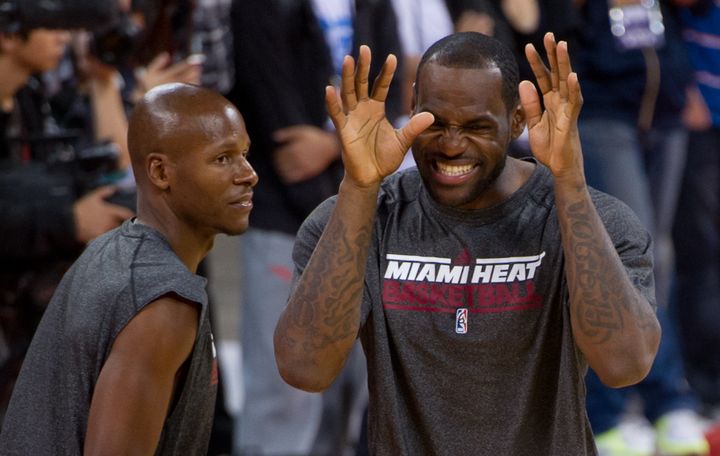
“Run to the 3-point line and spot up.”
What you just read is basketball’s new-age philosophy of transition offense. By streaking down the side of the floor and often sinking to one of the corners, modern-day wing players can space the court and allow for the point guard to penetrate gaps and kick the ball out for an open triple. While this has become prominent throughout the college landscape –- just watch Duke for 10 minutes –- the NBA has adopted it as its own as well, and has done so at a record pace.
Just over halfway through the 2012-13 season, the average game sees a robust 40 3-pointers hoisted a night. No team does so more than the New York Knicks, who shoot 29 per game and will likely shatter the single season record of 2,284, which was set just four years ago.
There is a classic adage in basketball that you live by the 3, you die by the 3. Or, in so few words, having a balanced offense is the one necessity to efficient scoring, particularly at this level. That however, has changed.
Minnesota Timberwolves assistant coach Bill Bayno believes that relying on the 3-pointer heavily -- with both big men and guards -- can lead to sustainable postseason success, not only in transition, but in the half-court as well.
"It's just simple math," Bayno told The Huffington Post. "You can shoot 33 percent from the 3, and that generates as many points as if you shot 50 percent from 2, which very few teams do throughout the year."

"[Mike] D'Antoni was the innovator in Phoenix when he had [Steve] Nash and Amar'e [Stoudemire] and 3-shooters around them. It consumes so much energy defensively to have to be in there on the weak side and tag that big diving and still sprint and get out to the shooters, so I expect more and more teams to go with it."
Through the All-Star break, 17 (of 30) NBA teams were averaging at least 19 3-point attempts per game. Better yet, 11 of those teams (or 65 percent), would be in the playoffs if the postseason started today. Furthermore, three of the league’s premier contenders -- Oklahoma City, Miami, San Antonio -– rank in the top four in overall percentage from downtown. Is it then merely coincidence that all three teams also rank in the top five in points per game as well?
"It was good enough for Miami to win a championship, relying heavily on the 3," Bayno adds, "but they also had LeBron and D-Wade, and Chris Bosh."
The NBA adopted the 3-point line in 1979 and this will be the third straight season of double-digit teams averaging 20 3s per game. In the modern game, the 3 is not merely limited to guards, with many power forwards and even 7-footers -- off pick-and-pop -- shooting it as well. Bayno, by the way, coaches an elite big man shooter, Kevin Love.
Of course, there is a strong counter to shooting so many 3s when it's the focal point of an offense: It's too predictable and teams cannot survive a cold shooting night.
"One way to defend it is the trap," Bayno says. "We had some success in Portland trapping Nash, because it makes it harder for him to find the open man and it helps your closeouts a little bit. It's not a direct line pass. But, because there's other 3-point shooters out there, teams are reluctant to trap. I don't think you can do it with a steady diet.
"I think it's doable [to win] when you have an off-shooting night if you're a good defensive team and you have another go-to guy. Like anything, you have to have balance."
Email me at jordan.schultz@huffingtonpost.com or ask me questions about anything sports-related at @Schultz_Report.
